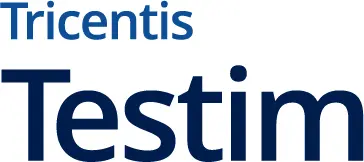High-speed implementation is a must to remain competitive in the modern world. Customers want quick fixes and faster updates. Since software companies want to remain competitive, they are testing on an agile team to improve speed, optimize resources, and streamline the entire software development lifecycle.
Scrum testing, a key agile framework, is shaping agile teams’ success, providing a structure for managing and executing projects.
In this post, we’ll discuss what scrum is, the roles in scrum testing, and best practices to help agile teams succeed. We’ll also discuss how agile testing differs from traditional testing and the challenges testers face in an agile environment.
What Is scrum?
Scrum is a framework for teams to resolve complex problems while simultaneously delivering high-quality products.
A scrum team comprises of the following cross-functional teams::
- The owner of the product
- Scrum lead
- A team of developers and testers
Scrum promotes greater flexibility, creativity, and efficiency, enabling teams to work independently without relying on external groups.
Scrum is a framework for teams to resolve complex problems while simultaneously delivering high-quality products.
The difference between agile and scrum
Agile comprises principles that guide the iterative approach to software processes. However, testers have to follow certain rules in an agile environment called scrum. Below are other key differences:
Agile
- Agile management is a set of incremental and iterative methodologies for software development.
- Agile management includes the rational unified process (RUP), extreme programming (XP), and scrum.
- Agile processes result in the evolution of needs and outcomes. This evolution in project development methodology is possible because of team collaboration.
- Agile teams are cross-functional and self-organizing. Analysis, documentation, and development of a new project go hand in hand. Advancement occurs with every iteration. This approach offers ease of accommodating changes, better scalability, and flexibility of operations and processes.
Scrum
- Scrum is a subset of the agile environment.
- It’s a technique to address complex issues and simultaneously deliver high-quality products.
- If an urgent change is required, the team has the flexibility to adjust.
- Effective collaboration and frequent communication ensure the success of scrum.
- Every sprint introduces better practices to increase efficiency.
How Is testing in agile different from traditional testing?
The Software Development Life Cycle (SDLC) needs a robust approach for quick idea implementation. Efficiency increases when an enterprise shifts from traditional to agile testing.
Traditional testing
Traditional testing focuses on understanding user needs, developing a product, and testing it post-development to identify and fix bugs before deployment. It assumes that processes are repetitive and predictable.
Its hierarchical, standardized approach assumes predictable processes. While the traditional model seems straightforward, it is time-consuming and lacks flexibility, requiring the team to complete tasks in a fixed sequence.
Agile testing
Agile testing seeks to correct the rigidity common in traditional testing. It’s a team-based approach but, unlike traditional testing, it’s interactive and dynamic. As a result, a product’s delivery time shortens. Agile divides projects into time-boxed sprints of fixed durations.
Agile testing provides a high level of adaptability and flexibility. As soon as users request modifications, the agile testing process quickly adjusts to the changes. The iterative cycles make changes according to consistent customer communication and feedback.
Roles and responsibilities in scrum testing
During scrum testing, the team has to test a product and see how it turned out from the customer’s point of view. Some of the main events a tester has to attend in an agile environment include:
- Sprint-planning sessions
- Daily standup meetings
- Sprint retrospectives
Instead of leaving testing for the last stage, as they would in a traditional test environment, a tester has to carry it out throughout the process. Testers working in scrum testing learn a lot of new things in addition to testing, including the following:
1. Clearer grasp of business logic
Testers gain deep knowledge of how domain applications work. They work closely with the development team, enabling them to create innovative and effective business case scenarios. Their familiarity with architectural diagrams and development terminologies increases.
Testers need to understand business logic so they can discuss the application specifications with business analytics and developers.
2. Adopt automation for a speedy testing
Speedy testing requires automation. Besides, automation reduces risks during regression testing.
Adopting services like Testim is critical. Testim offers automated functional testing using artificial intelligence. It speeds up execution, authoring, and maintenance during automated tests.
3. Adhering to SDLC from the start
In the waterfall model, testers used to stay behind before the testing began. But in scrum testing, a tester must adhere to SDLC from the beginning of the process. This approach broadens the test windows and improves collaboration. Testers also gain a deep insight into the procedure, so no test phases are left out.
4. Regular standup meetings
In an agile environment, testers must attend regular 15-30-minute standup meetings. In these meetings, the manager or the scrum coach asks every team member about what they did the day before. They also gather insights on the current day’s tasks and possible roadblocks, which helps eliminate challenges in the initial stages of a project.
What a tester needs to know before moving to agile testing
Adapting to the agile environment is a significant change for someone used to the waterfall model. Here are some things a tester needs to know before moving to agile testing.
1. Knowledge of automation tools
Repetitive tests for each sprint are a waste of time. Testers need to understand automation tools that can speed up testing, including regression testing.
2. Knowledge of Project Management Tools
There was a time when testers used the HP Quality Center to track and report bugs. Tools like Slack, JIRA, Trello, Asana, and Mantis help identify bugs and promote efficient collaboration and project management.
What Does Testing Look Like in Scrum?
The entire scrum testing procedure is divided into four quadrants. Let’s take a look.
Quadrant 1
The first step is for testers to check the quality of the code and give immediate feedback. Then, developers perform unit and component architecture testing based on the feedback. This ensures the coding unit fulfills the requirement and the pieces of code work when integrated.
Quadrant 2
Both the testers and developers get the requirement. Both carry out their respective tasks keeping business objectives in mind. That includes testing possible scenarios. Testers have to perform prototype and wireframe testing while keeping user experience in mind.
Quadrant 3
Automation testing evaluates the product usage. Despite the product development being incomplete, tests are run. The scheduled demos ensure that development is going on according to business goals. These are the five stages the third quadrant covers:
- Collaborative testing
- User acceptance testing
- Exploratory testing
- Usability testing
- Pairwise testing
Quadrant 4
Testers test performance, data migration, scalability, infrastructure, stress, and load. Other aspects include security to ensure authentication and prevent hacking and attacks.
Strategizing Is the Key to Agile Testing
There are four stages that help keep things organized when moving from traditional testing to agile.
Iteration 0
This stage involves the completion of the initial setup work. It entails establishing a business case, analyzing requirements, creating use cases, estimating costs, and preparing a preliminary project.
Development Phase
Each sprint in this phase comprises agile practices. Developers verify unit testing and service integration testing. The testers also perform agile acceptance testing. The stakeholder testing team and project testing team execute test cases together.
Product Deployment
The deployment of products into production comprises four steps. It starts with training the end-users and then creating data backups. After marketing the release, the system documents and finalized user are documented.
Production Support
Production support includes regular testing and reporting bugs. If there are any, the production support team fixes them.
Challenges a Tester Might Face in Agile Testing
Testers used to traditional testing may face several challenges when moving to agile testing.
- Sharp deadlines
- Learning the development procedure and programming languages
- Sudden changes requested from the stakeholder
- Impeccable coordination between teams
Best Practices for Scrum Testing
- Automate scrum practices to improve development speed and accuracy and maintain consistency.
- Use tools that enhance project planning, collaboration, and time planning.
- Hold regular retrospective meetings to discuss the feedback from the testing process and refine processes for future prints.
- Use techniques such as RICE scoring, Priority Poker, MoSCoW, and Stack Ranking to prioritize tasks and avoid a product backlog.
- Use a springboard, sprint burndown charts, and release burndown charts to visualize sprint tasks and better manage sprint backlog.
Automate scrum practices to improve development speed and accuracy and maintain consistency.
Final Thoughts
Moving from traditional to agile testing can be overwhelming for a tester at first. But once it settles down, a tester’s learning scope broadens. Consider the change as an opportunity for enhancing your skills and professional growth. Once you get the gist of it, nothing can stop you from progressing in the industry.
Author bio: This post was written by Arnab Roy Chowdhury. Arnab is a UI developer by profession and a blogging enthusiast. He has strong expertise in the latest UI/UX trends, project methodologies, testing, and scripting.




